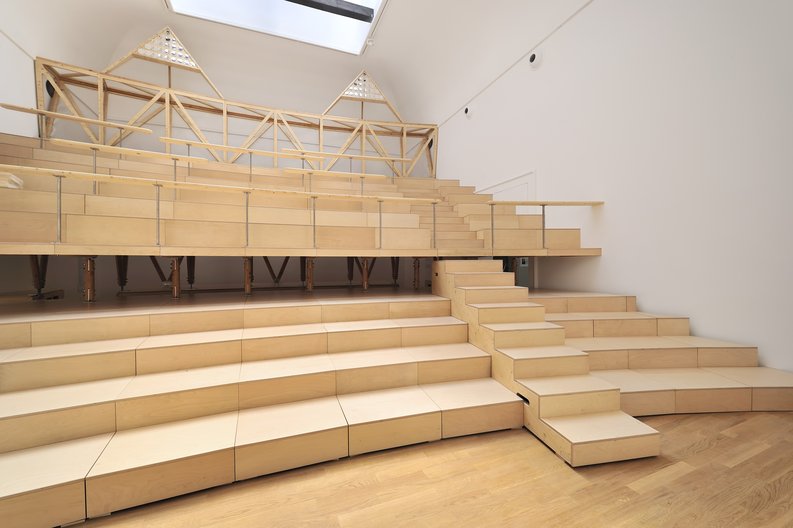
© Cristiano Corte
In 2010 (29 August – 21 November 2010) the British Pavilion was ironically reframed as Villa Frankenstein. Making direct reference to the work of the British Victorian social critic and historian of Venetian architecture John Ruskin, the pavilion acted as a stage for drawing, discussion and scientific enquiry, putting forward the proposition that meaningful strategies for development can only come from understanding a place in detail.
Under the direction of muf architecture/art Llp, Villa Frankenstein enabled an exchange of ideas between Venice and the UK, examining not only the city’s relationship with the UK, but the situation of Venice itself as an archipelago that has given birth to one of the most iconic and alluring architectures in the world.
The centrepiece of the Pavilion, represented as a Stadium of Close Looking, was a 1/10 scale model of a section of the Olympic Stadium for London 2012, reinterpreted by muf with Atelier One engineers, and built by Venetian carpenters Spazio Legno. This hybrid structure that acted as a platform for discussion and enquiry was both an invitation to look and an emblem of the value of looking.
The Made in Venice theme was continued through a series of separate installations in the Pavilion including a 15 square metre ecologically functioning slice of salt marsh showing a close‐up view of the native floral and fauna of the Venice Lagoon. Other exhibits included a new project by Wolfgang Scheppe drawing on both Ruskin’s original notebooks, and a series of historical photographs of Venice taken by local residents, Alvio and Gabriella Gavagnin. Seven of Ruskin’s Venetian Notebooks (1849‐1850) were lent by the Ruskin Foundation from the Ruskin Library at Lancaster University, while inter‐active electronic access to his research in Venice was provided within the pavilion.
Debates, workshops, drawing classes and scientific discussions that took place during the three months of the Biennale were captured in the form of a catalogue, edited by Adrian Dannatt, and acted as a further creative platform to inform thinking for London as it moved towards the 2012 Olympic Games.
